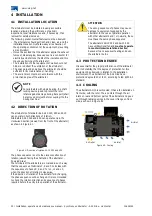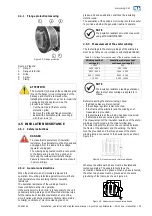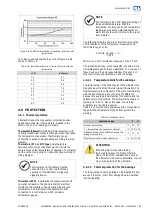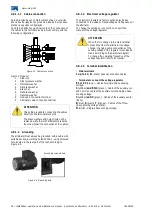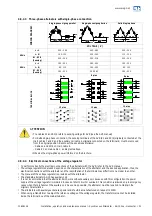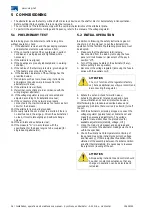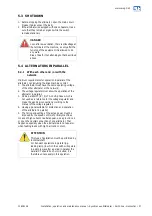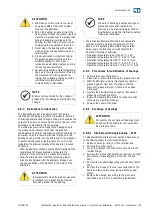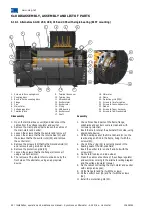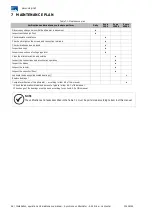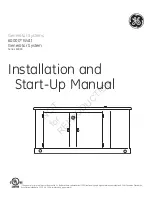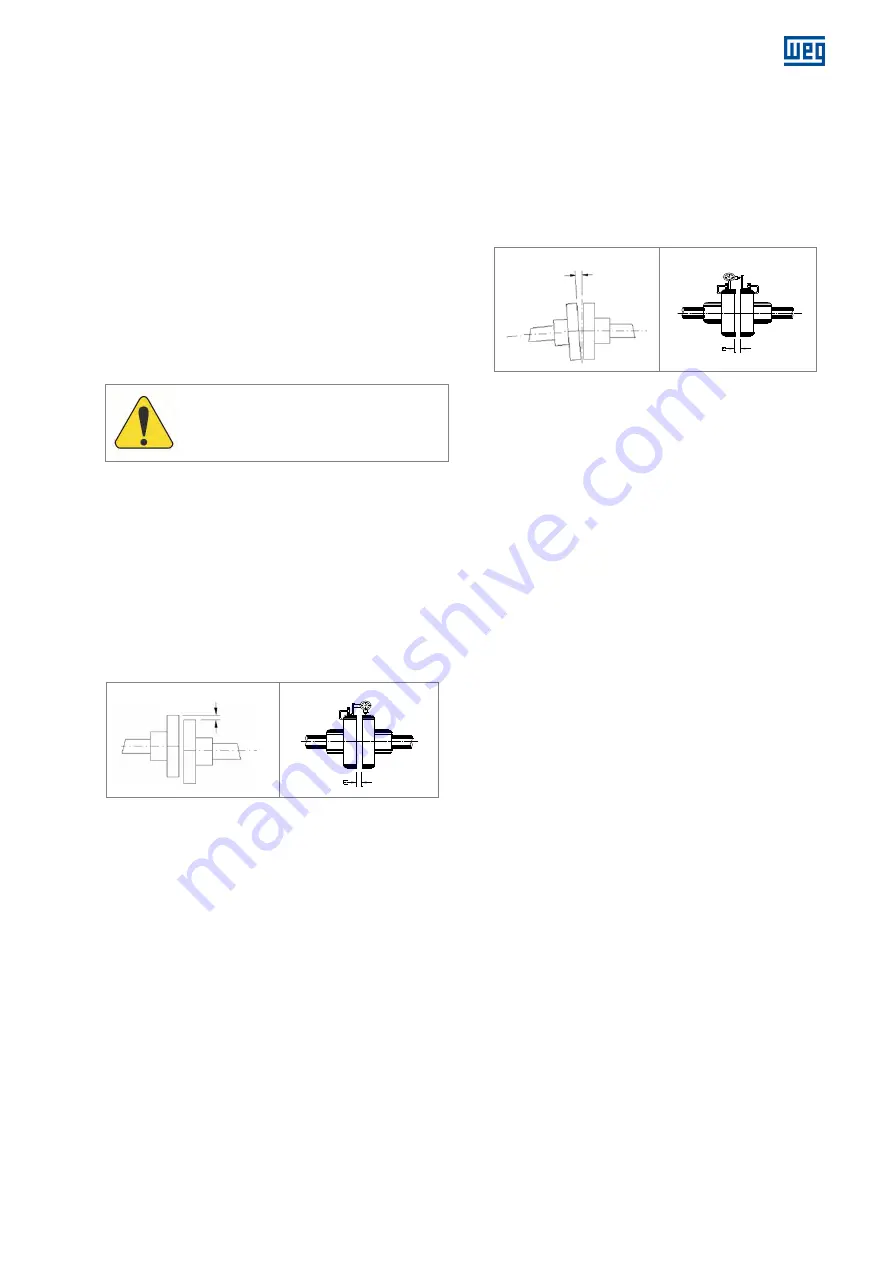
12638144 Installation, operation and maintenance manual – Synchronous Alternator – AG10 line - Horizontal l 33
4.9
MECHANICAL FEATURES
4.9.1
Bases and foundations
The dimensioning of the base should be performed so
as to confer rigidity to the structure, avoiding
amplification of the vibration levels of the set. The base
should have a flat surface against the feet of the
alternator in order to prevent deformations in its frame.
The base should always be leveled from the ground
(floor). The leveling is achieved by placing shims
between the base and the floor.
4.9.2
Alignment and leveling
The alternator must be perfectly aligned with the driving
machine, especially in cases of direct coupling.
ATTENTION
Incorrect alignment can cause defects in the
bearings, vibration and even shaft rupture.
4.9.2.1
Alternators with double bearing (B35T
or B3T)
The alternator must be correctly aligned with the driving
machine mainly in cases of direct coupling.
Incorrect alignment can cause defects in the bearings,
vibration and even shaft rupture.
The alignment must be carried out according to the
recommendations of the coupling manufacturer.
It is necessary to make the parallel and angular alignment
of the alternator, as shown in Figure 4.9 and Figure 4.10.
Radial measurement
Figure 4.9: Parallel alignment
Figure 4.9 shows the parallel misalignment of two shaft
ends and practical means of suitable measurement using
dial gauges.
The measurement is made in four points at 90° with the
two half-couplings rotating together in order to eliminate
the effects due to of the support surface irregularities of
the tip of the dial gauge. Choosing the upper vertical
point 0º, half the difference of the measurement of the
dial gauge in points 0° and 180° represents the vertical
coaxial error. This should be suitably adjusted by adding or
removing assembly shims. Half the difference of the
measurement of the dial gauge in points 90° and 270°
represents the horizontal coaxial error.
This way we get an indication of when it is necessary to
raise or lower the alternator or move it to the right or left
on the activated side to clear the coaxial error.
Half of the maximum difference of the measurement of
the dial gauge in a full rotation represents the maximum
eccentricity.
The maximum permitted eccentricity for rigid or semi-
flexible coupling is 0.03 mm.
Where flexible couplings are used, higher values than
those given above are acceptable, but must not exceed
the value given by the coupling manufacturer. It is
recommended to keep a safety margin in these values.
Angular misalignment
Axial measurement
Figure 4.10: Angular alignment
Figure 4.10 shows the angular misalignment and the
practical way of measuring
The measurement is made in four points at 90° with the
two half-couplings rotating together in order to eliminate
the effects due to irregularities of the support surface of
the tip of the dial gauge. Choosing the upper vertical
point 0º, half the difference of the measurement of the
dial gauge in points 0° and 180° represents the vertical
misalignment. This should be suitably adjusted by adding
or removing assembly shims.
Half the difference of the measurement of the dial gauge
in points 90° and 270° represents the horizontal
misalignment. This should be properly fixed with lateral /
angular movement of the alternator.
Half of the maximum difference of the measurement of
the dial gauge in a full rotation represents the maximum
angular misalignment.
The maximum permitted misalignment for rigid or semi-
flexible coupling is 0.03 mm.
When flexible couplings are used, higher values than
those given above are acceptable, but must not exceed
the value given by the coupling manufacturer.
It is recommended to keep a safety margin in these
values
.
In alignment / leveling, it is important to consider the
effect of temperature and of the alternator and the driving
machine. Different levels of expansion of the coupled
machines can change the alignment / leveling during
operation.
4.9.2.2
Alternators with single bearing (B15T)
The base should be flat, allowing for correct support of
the alternator on it. Wherever possible, vibration isolators
should be used (shock absorbers) + between the set
alte base engine in order to minimize
transmission of vibration. When it is not possible to use
the insulators between set and base, it is necessary to
use the insulator between base and ground. One of the
two settings is recommended, otherwise, there will be
operation with high levels of vibration.




